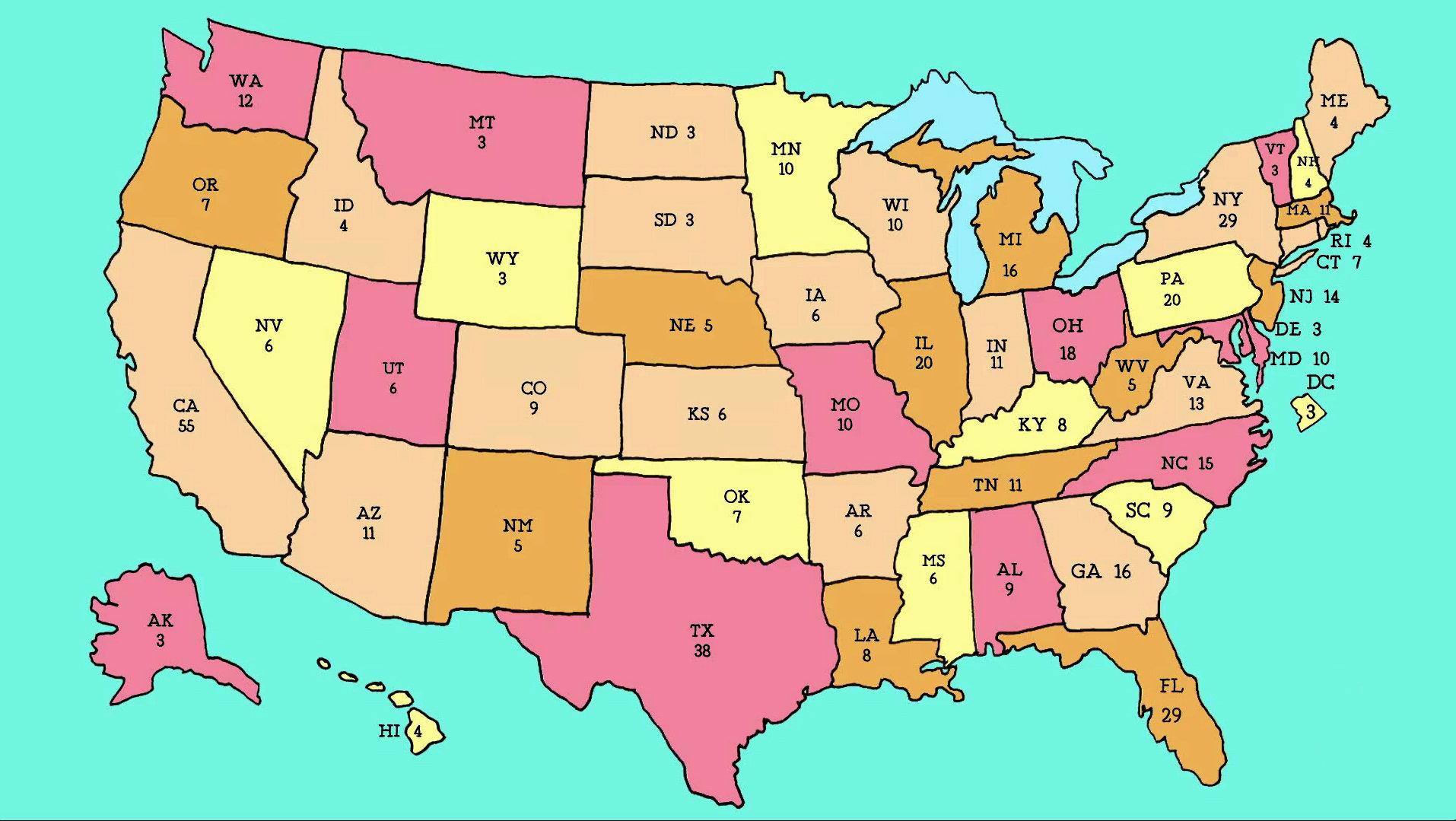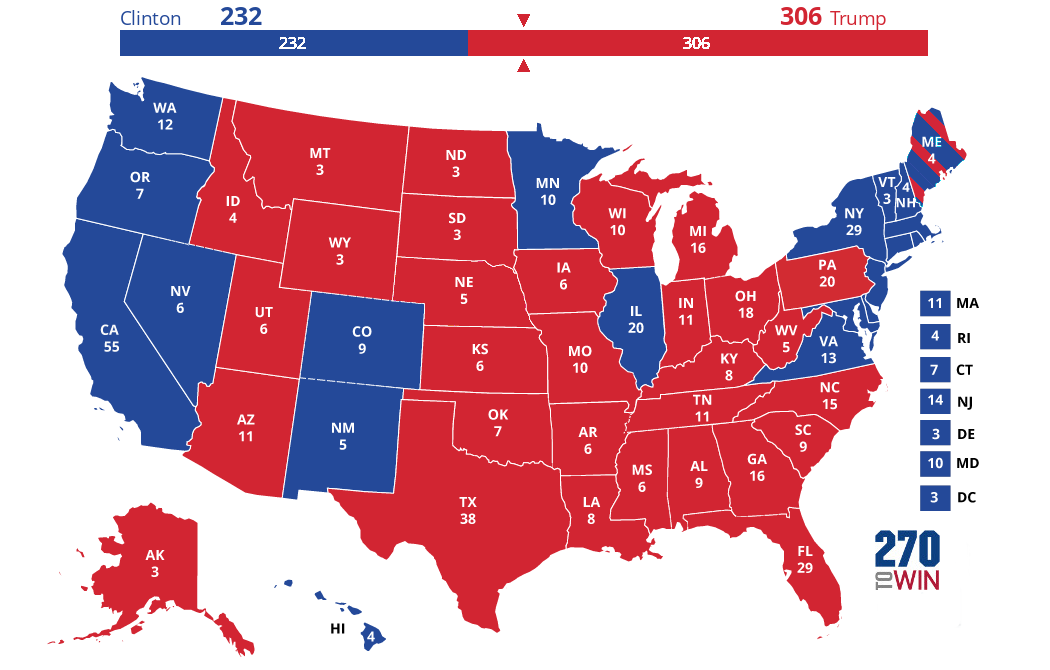The Electoral College and 2020: understanding a distortion in US politics
People often forget that the United States is a federation of states. And the institutional structure designed in the US Constitution reflects this. The framers of the Constitution had to reach several agreements over the representation of single states and the major compromise came with the Senate. It is based on a representation equal in number per state (two senators each), not on the number of inhabitants, dimension or year of admission to the Union.
The Electoral College’s distortion starts with that: It currently comprises 538 members, one for each US senator and representative, and three additional electors representing the District of Columbia. Each state has a number of electoral votes equal to the combined total of its congressional delegation. The Electoral College was established by the 2nd Article of the US Constitution more than 230 years ago and was only marginally modified by the 12th and the 23rd Amendments (respectively in 1804 and 1961).

This unique method for indirectly electing the president is attracting increasing criticism, especially since the highly controversial 2000 presidential election when George W. Bush was elected despite Al Gore winning the national popular vote. Then, in the 2016 election, Hillary Clinton won the popular vote nationwide with a margin of over three million votes – while Donald Trump prevailed in the Electoral College and became President. Clinton was the fourth candidate to lose the Electoral College while winning the popular vote. She joined Samuel Tilden (1876), Grover Cleveland (1888) and Al Gore (2000).
The Electoral College’s distortions are further strengthened by the “winner-takes-all” system: in 48 states and the District of Columbia, when a candidate for president wins a state’s popular vote, that party’s list of electors cast the vote for president. For example, Pennsylvania has 20 electoral votes. If Joe Biden wins the state’s popular vote on November 3rd, all 20 electors nominated by the Democratic Party in Pennsylvania will be selected for the Electoral College (later, on December 14th, these 20 people will gather on the state’s capital to cast their votes for the president of the US). This means that a candidate needs just one vote more than any other candidate to capture all the state’s electors. Winning large in single states does not pay off. In 2016, for instance, Clinton won huge margins in dense urban states like New York and New Jersey, while narrowly losing several battleground states (such as Ohio and Pennsylvania) to Donald Trump. In this respect, California – where Clinton led by 28 percentage points – represented many “wasted votes”.

The idea of abolishing the Electoral College and instead electing the president by direct popular vote seems to be widely accepted by voters. However, since changing the system of election requires an amendment to the US Constitution, the path to reform is very complicated and far from becoming a reality.
The Electoral College has, at times, favored the Democrats; at other times, the Republicans. In recent years, however, it is favoring Republicans. And also this year, while Biden is enjoying a stable lead in the opinion polls in the national popular vote, the final outcome of the election is still hanging in balance because of the Electoral College – which seems to favor Trump again. And that is because the states that are most likely to decide the contest are more Republican-leaning than the country as a whole.
This can be determined by means of a tipping-point calculation. It works like this: All states are sorted in order of the projected margin of victory for one of the two parties. For example, for a Republican candidate, it would start with the most Republican state. In the next column goes the difference between the forecast margin in the state and the national projected margin. Then, in the third column, is the cumulative number of electoral votes in these states. The state that puts the Republicans over the majority of 270 electoral votes is the tipping-point state. Overall, of the 14 states that may decide the election in 2020, the tipping-point state is one of the eleven that may vote more Republican than the rest of the country. Meanwhile, in this list, only Colorado, Minnesota and Virginia can be considered as “safe” Democratic states.
Pennsylvania is currently the most likely tipping-point state in the 2020 Electoral College, and, at the moment, Biden is projected to win there by five points. But even if that were to happen, it still puts Pennsylvania three points to the right of the forecast’s national margin (Biden +8 on October 23rd). This means that if the polls are to become tighter and Biden’s national advantage decreases, the rightward move of Pennsylvania may help Trump win. And because most of the near-by potential tipping-point states are right-leaning, exactly as in 2016, Trump could conquer enough Republican-leaning swing states to win a majority in the Electoral College – without winning the national popular vote.
Democrats are strongly vocal against the Electoral College, which dramatically penalized them in 2016 and could reward Trump this year as well. However, the system slightly favored Barack Obama in 2008 and 2012. It also tilted from one party to the other almost every four years since the end of WWII. Voter demographics and even contingent issues (such as the Coronavirus) can shift the Electoral College advantage from Republicans to Democrats, and vice versa.
The only exception comes from the first half of the last century, when Republicans persistently benefited from an Electoral College advantage because Democrats were winning largely in the South, therefore amassing a lot of “wasted” votes. The question is whether the Democratic Party, which is currently concentrating its consensus in the populous coastal states, is steadily re-entering a similar scenario for the second time in its history.
